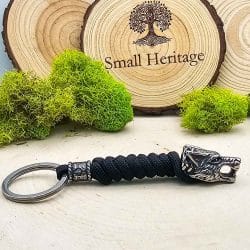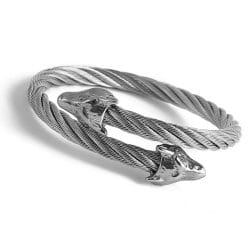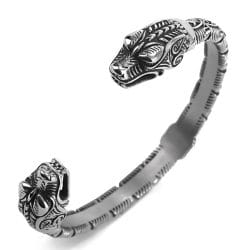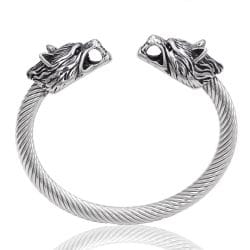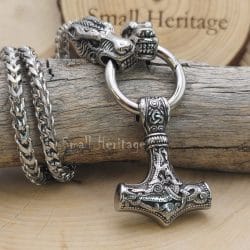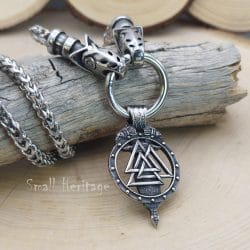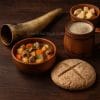
-
Shop by Type
-
Shop by Culture
-
Collections
Home » Blog » Norse & Viking » Ragnarok: The End and Rebirth in Norse Mythology
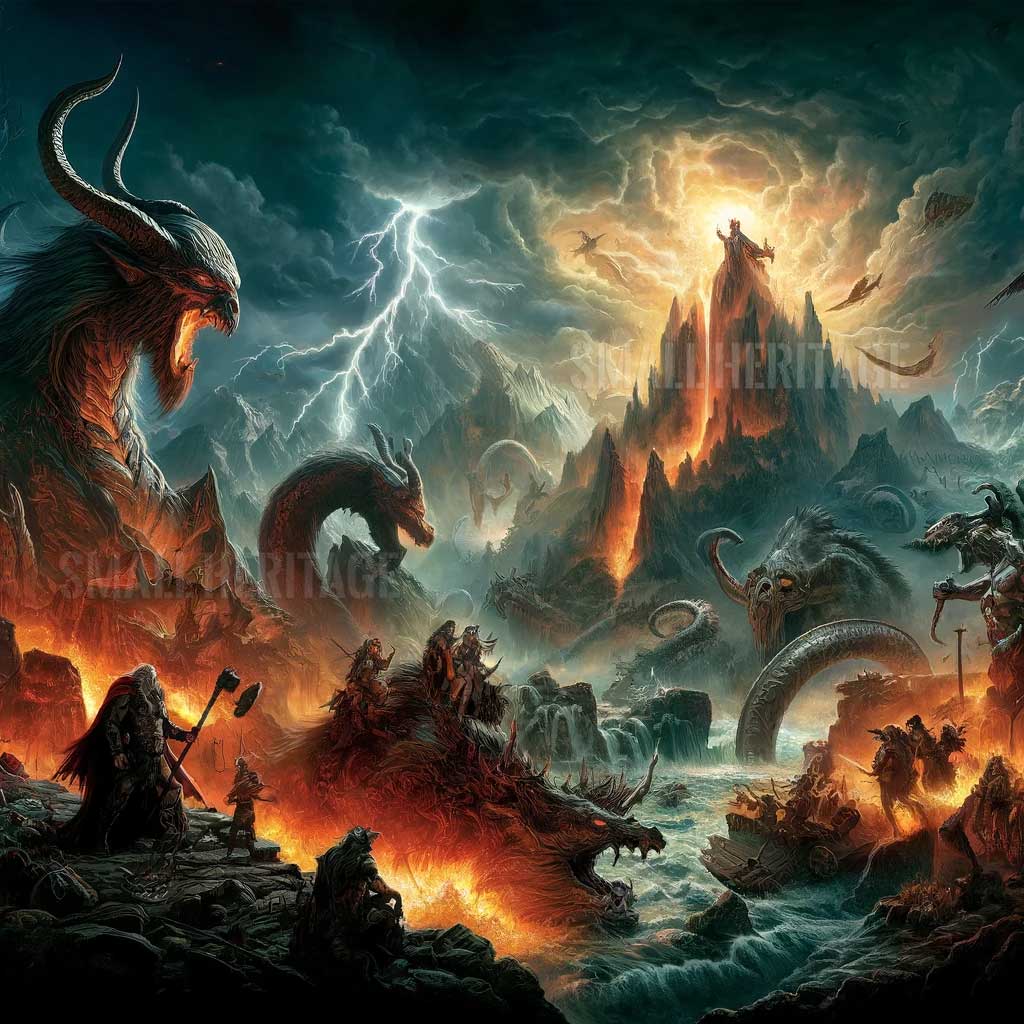
Ragnarok, often referred to as the “Doom of the Gods,” is a significant event in Norse mythology that describes the ultimate destruction and subsequent renewal of the world. This cataclysmic series of events includes natural disasters, battles between gods and giants, and the rebirth of the world. The story of Ragnarok is not only a tale of end times but also a narrative of hope and renewal.
In Norse mythology, Ragnarok is a prophecy that foretells the end of the cosmos and the death of many gods, including Odin, Thor, and Loki. The primary sources of this myth are the Poetic Edda and the Prose Edda, which provide detailed accounts of the events leading up to, during, and after Ragnarok.
According to “Norse Mythology: A Guide to Gods, Heroes, Rituals, and Beliefs” by John Lindow, Ragnarok is a culmination of various mythological threads that highlight the Norse understanding of the cyclical nature of the world.
The onset of Ragnarok, the prophesied destruction of the cosmos in Norse mythology, is marked by a series of significant and ominous events that signal the end of the gods and the old world. These include the death of the beloved god Baldr, the arrival of the brutal Fimbulwinter, and the unleashing of the destructive forces led by Loki and Fenrir. These events set the stage for the final, cataclysmic battle between the gods and their enemies, where both sides will face near-total annihilation. Let’s dive deeper into these key moments.
The death of Baldr, the god of light, joy, and purity, is the first and most crucial event that sets Ragnarok in motion. According to Norse myth, Baldr’s death was foreseen in dreams, leading the gods to take measures to protect him. Frigg, Baldr’s mother, made every object in the world swear not to harm him, except for a small, seemingly insignificant plant — the mistletoe.
In a tragic twist, Loki, the god of mischief, crafted a dart made of mistletoe and tricked Höðr, Baldr’s blind brother, into throwing it at him. The dart pierced Baldr, killing him instantly. This event is seen as the first great loss for the gods, shattering the peace of Asgard and marking the beginning of Ragnarok. The emotional weight of this event is captured in “The Poetic Edda” and retold by Carolyne Larrington in her renowned translation.
The death of Baldr not only symbolizes the loss of innocence but also the inevitable approach of chaos. His death signals that the gods are no longer invincible, foreshadowing the downfall of the entire cosmos.
After Baldr’s death, the world is thrown into a harsh and relentless winter known as Fimbulwinter. This winter lasts for three years without respite, plunging the world into darkness, cold, and despair. The name “Fimbul” translates to “mighty” or “great,” reflecting the sheer severity of the winter that precedes the world’s end.
Fimbulwinter is not just a test of endurance for humanity and the gods; it signifies the breakdown of social and moral order. Crops fail, animals die, and people turn against each other in a desperate fight for survival. Wars rage across the land as famine and chaos take hold. The world becomes consumed by selfishness and betrayal, with brother turning against brother, and no hope of redemption in sight.
The imagery of Fimbulwinter is vividly portrayed in “The Prose Edda” by Snorri Sturluson, translated by Jesse Byock. It marks the ultimate breakdown of the natural order, setting the stage for the final battle, when even the gods will be helpless against the forces of chaos.
As Fimbulwinter rages on, two of the most dangerous beings in Norse mythology are freed from their bonds — Loki, the trickster god, and Fenrir, the monstrous wolf destined to kill Odin. Their release marks the true beginning of Ragnarok, as they lead the charge against the gods.
Loki, once a companion to the gods, has long been known for his mischief and cunning. However, after Baldr’s death, Loki’s treachery becomes undeniable. Bound in a cave with venom dripping onto his face as punishment for his role in Baldr’s death, Loki breaks free during Ragnarok. His hatred for the gods fuels his actions, and he joins forces with the giants and other enemies of the gods to bring about their downfall.
Loki’s betrayal is more than just personal vengeance; it’s symbolic of the breakdown of all bonds of loyalty and friendship in the Norse cosmos. As he stands at the helm of the forces of chaos, leading them into the final battle, Loki represents the ultimate destruction of order.
Perhaps the most terrifying of all creatures to be unleashed during Ragnarok is Fenrir, the colossal wolf. Fenrir, the offspring of Loki and the giantess Angrboda, had been bound by the gods out of fear of a prophecy that foretold he would kill Odin during the final battle.
As Ragnarok approaches, Fenrir breaks free of his chains and grows to an enormous size, his mouth stretching from the heavens to the earth. His release is one of the most critical moments in the lead-up to Ragnarok. Fenrir’s role in Ragnarok is brutal and inevitable — it is his destiny to swallow Odin whole, marking the fall of the Allfather and the destruction of the old order.
In tandem with Loki, Fenrir represents the unstoppable force of fate, one that even the gods cannot escape. His battle with Odin is perhaps the most significant event in Ragnarok, as it symbolizes the ultimate clash between order and chaos, life and death.

As Loki and Fenrir lead the giants and monstrous creatures against the gods, the cosmos is engulfed in flames. The final battle, known as Vigrid, takes place on a plain where gods, giants, and all manner of beings clash in a cataclysmic struggle. Odin, Thor, Freyr, Tyr, and other gods meet their destined enemies, and the world as it is known is brought to an end.
However, Ragnarok is not the end, but a cycle. After the destruction, a new world is foretold to rise from the ashes, where surviving gods and humans will create a new era of peace and prosperity.
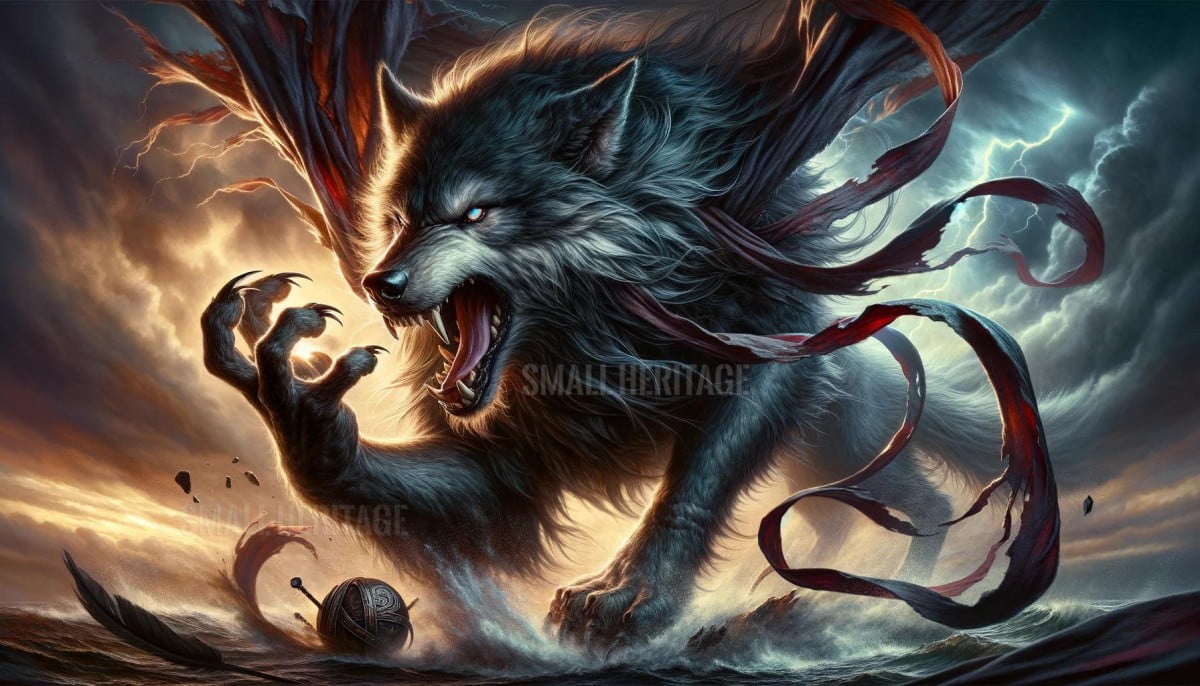
Odin, the chief of the gods, is devoured by Fenrir, the monstrous wolf.
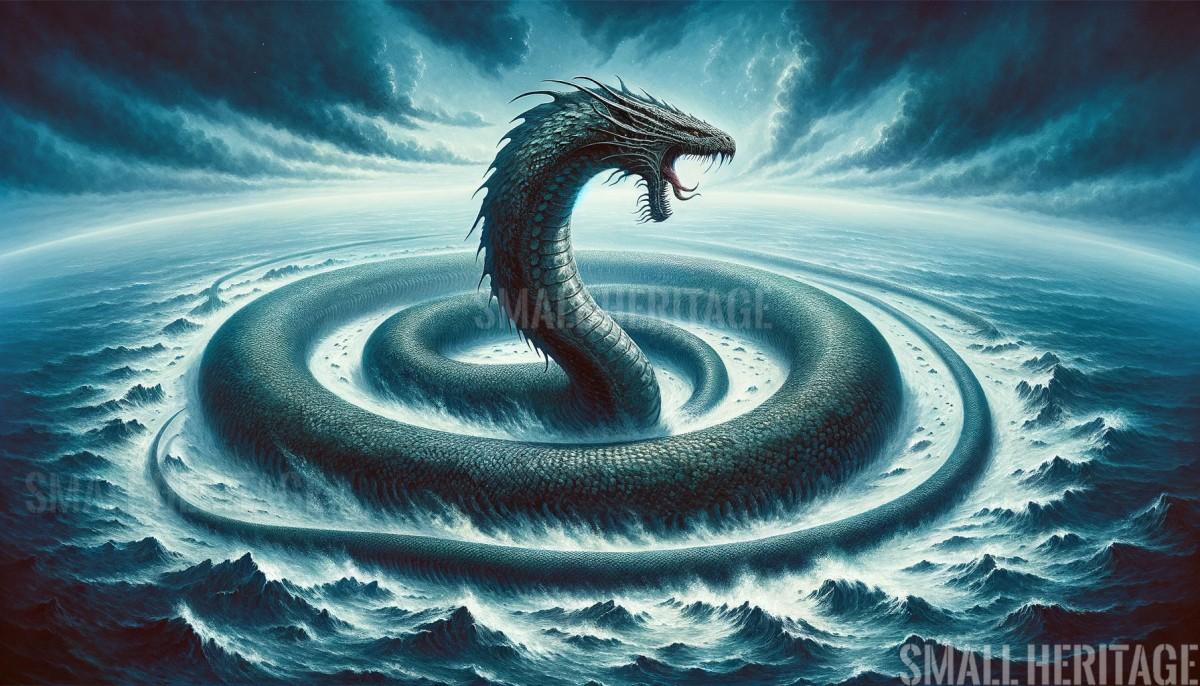
Thor fights the Midgard Serpent, Jormungandr. Though he kills the serpent, he succumbs to its venom.
Freyr faces Surt, the fire giant, and is killed in the battle.
Heimdall and Loki engage in a deadly duel, resulting in the deaths of both.
These events are vividly described in “Norse Mythology” by Neil Gaiman, which retells the ancient myths with modern clarity.
Despite the massive destruction, Ragnarok also heralds a new beginning. The surviving gods, including Baldr and Hodr, return from the underworld, and a new world emerges from the chaos.
These gods are resurrected and take on leadership roles in the new world.
The world is reborn, cleansed of its previous corruption, and populated by two human survivors, Lif and Lifthrasir.
John Lindow’s “Norse Mythology: A Guide to Gods, Heroes, Rituals, and Beliefs” also highlights the themes of renewal and hope that are central to the Ragnarok myth.
Ragnarok has left a significant impact on modern culture, influencing literature, movies, video games, and even comics. Its themes of destruction and rebirth resonate with many contemporary narratives.
The myth of Ragnarok has been retold in numerous books and graphic novels. Neil Gaiman’s “Norse Mythology” is a notable example.
Films like “Thor: Ragnarok” and TV series like “Vikings” have brought elements of the myth to mainstream audiences.
Games such as “God of War” and “Assassin’s Creed Valhalla” incorporate aspects of Ragnarok in their storylines.
Ragnarok symbolizes both the end and the new beginning. It represents the cyclical nature of time, the inevitable destruction that precedes renewal, and the hope that persists even after total annihilation.
The end of the old world and the birth of a new one highlight the Norse belief in the cyclical nature of existence.
Despite the destruction, the promise of a new and better world underscores the theme of hope.
The significance of Ragnarok is further explored in “The Viking Spirit: An Introduction to Norse Mythology and Religion” by Daniel McCoy.
Ragnarok can be compared to other end-time myths across different cultures, such as the Christian apocalypse, Hindu Kalpa, and the Mayan doomsday. These myths share common themes of destruction and renewal.
The Book of Revelation describes the end of the world and the final judgment.
Hindu mythology speaks of cyclical destructions and rebirths.
The Mayan calendar’s end has been interpreted as a prophecy of global transformation.
Daniel McCoy’s “The Viking Spirit” provides insights into these comparative mythological themes.
Ragnarok is a powerful and enduring myth that encapsulates the themes of destruction, rebirth, and hope. Its narrative has transcended time, continuing to influence modern culture and thought. As we explore the depths of this myth, we uncover timeless truths about the human condition and the eternal cycle of life and death.
